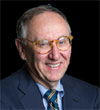
Slums in Egypt – as in many developing countries – are considered as one of the most important problems in Egypt. There are about 1,100 slum areas hosting about 16 million inhabitants. Slums in Egypt vary considerably in their characteristics which make prioritization and intervention policy a debatable issue.

The territory of the Balkan Peninsula (BP) is one of the most active geodynamical regions in Europe. Numbers of publications are devoted to this problem. An important indicator in geodynamical point of view is an eventual station movement of GNSS network stations. Determination of the size and direction of the vectors of movement, their analysis and assessment is of significant importance for their further interpretation with a view to present the geodynamical picture of the region.

During the ultra-communist Khmer Rouge regime (1975-79) in Cambodia, the private ownership of land was abolished and it remained unrecognized also during the following 10-year long Vietnamese-backed Communist government (1979-89). All land-related documents, including the land register, maps and geodetic networks were systematically destroyed as well as most professionals and educated people eliminated during the tragic 1975-79 period.

Global Navigation Satellite System (GNSS) technology has revolutionised the way 3-dimensional positions are determined on and above the Earth’s surface. GNSS-based positioning has become a vital tool for a wide range of applications in areas such as surveying, mapping, asset management, precision agriculture, engineering and construction. A lesser known application that has benefited immensely from the introduction of GNSS technology is animal tracking.
INDUSTRY | LBS | GNSS | GIS | IMAGING | GALILEO UPDATE
R330™ GNSS receiver by Hemisphere GNSS
Hemisphere GNSS has launched the new R330 GNSS receiver, a versatile, fully featured positioning system. It delivers accurate and robust positioning through a variety of differential correction methods including SBAS, L-Band, Beacon and RTK. The wide range of …
INDUSTRY | LBS | GNSS | GIS | IMAGING | GALILEO UPDATE
ISRO Navigation Centre near Bangalore unveiled
Indian Space Research Organisation has unveiled its Navigation Centre in Bangalore Rural District for the proposed Indian Regional Navigation Satellite System (IRNSS), a constellation of seven spacecrafts that will enable users to know their location and …

INDUSTRY | LBS | GNSS | GIS | IMAGING | GALILEO UPDATE
Congress cuts funding for updating flood maps
Congress has cut funding for updating flood maps by more than half since 2010, from $221 million down to $100 million this year. And the president’s latest budget request would slash funding for mapping even further to …
INDUSTRY | LBS | GNSS | GIS | IMAGING | GALILEO UPDATE
Spain to host new Galileo Satellite Service Center
Europe has inaugurated its newest Galileo GNSS service center. Located in Torrejón de Ardoz, Spain, the Loyola de Palacio GNSS Service Center will be dedicated to providing constellation information to companies that want to use satellite-sourced …
ST-Ericsson has sold its GPS mobile business to Intel.ST-Ericsson, which focuses on mobile and wireless chips, announced the sale without naming the buyer. An Intel spokesman later said the US chipmaker bought the assets. http:// articles.timesofindia.indiatimes.com/











 (5.00 out of 5)
(5.00 out of 5)